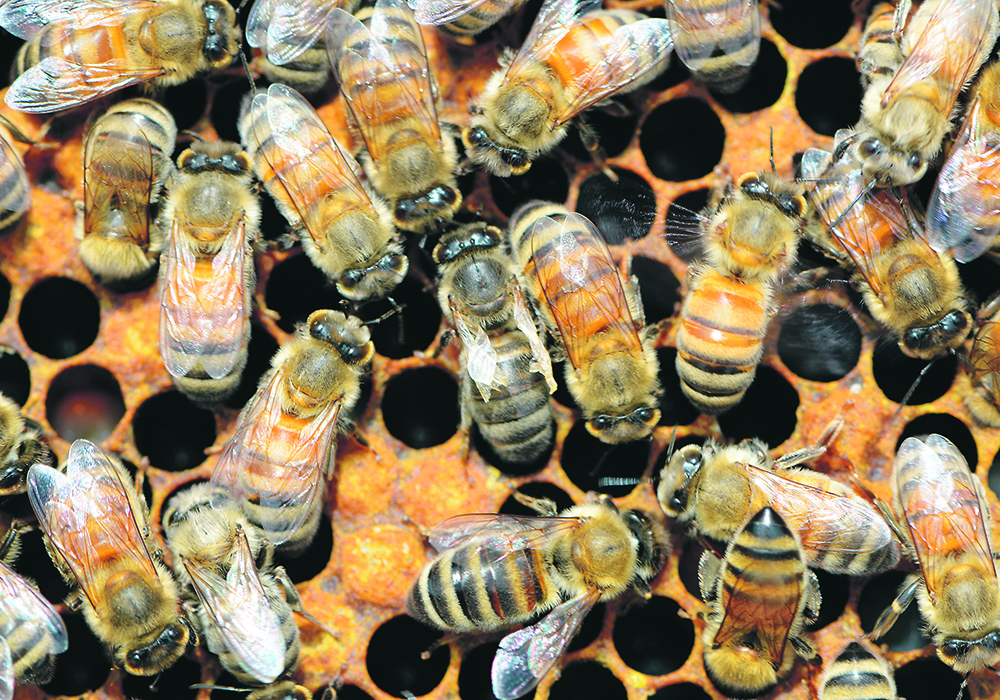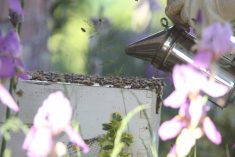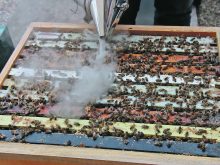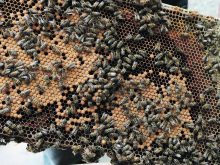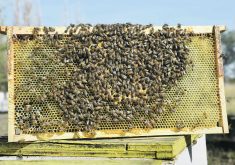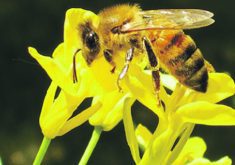Replacement products must be able to kill varroa mites without harming honeybees or affecting food safety for humans
Varroa mites that threaten bee colonies are showing increasing resistance to a product commonly used to kill the pests, said an industry leader.
“It certainly seems to be more and more prevalent, and last year it became even more prevalent,” said Rod Scarlett, executive director of the Canadian Honey Council. “It is quite possible that the life expectancy of this particular chemical might only be a couple more years.”
The product is Apivar, whose active ingredient is a chemical called amitraz, said research associate Shelley Hoover of the University of Lethbridge.
Read Also

Stacking Canada up on gene editing livestock
Canada may want to gauge how Argentina and other countries have approached gene editing in livestock and what that has meant for local innovation.
“What we’ve seen over the past couple years is decreased efficacy, or at least high variability in the efficacy of the product across Canada, not just in one geographic location specifically,” she said.
“And so, this indicates the first initial stages of resistance to amitraz… it’s been reported from a number of different provinces and areas within the provinces, and of course, varroa is probably the largest problem in bee health right now.”
The pests are external parasites that feed on body fluids of developing and adult honeybees. Besides fatally weakening or damaging their hosts, they can transmit a variety of viruses to the bees.
The viruses can persist at high levels for long periods within honeybee colonies even if mites have been reduced, said Hoover.
“And so, there’s also things going on with the virulence of those viruses.”
Apivar consists of a plastic strip impregnated with amitraz that lasts about 42 to 56 days, she said. “It’s not sticky like flypaper. The bees walk on it and it kills the mites, so depending on the size of the colony, you put in a different number of strips so that it covers the whole colony.”
One problem facing beekeepers is that resistance by the mites to Apivar can be inconsistent, with some operations showing resistance in all bee colonies while other operations have resistance in only some of the hives, said Hoover.
“The beekeepers really have to be on top of it and frequently monitor before treatment to know what the levels (of mites) are, and then monitor after treatment to verify the efficacy.”
Besides containing nearly half of Canada’s honeybees, Alberta also contains a pollination industry, she said. If bee mortality increases, it could affect crops ranging from the province’s seed canola to blueberries and tree fruit in British Columbia, she added.
There is currently nothing available in Canada that can completely replace Apivar, said Scarlett. “There are products in the pipeline — not yet commercialized, but in the research stage — that show promise,” he said.
“There are other various means of treatments out there… that may be applicable, but as it stands right now, there is really nothing if we have a severe case of efficacy issues in the next year or two.”
Hoover said any replacement product must be able to kill varroa mites without harming honeybees or affecting food safety for humans.
The mites also lay their eggs within brood cells containing the larvae of honeybees, which are covered by wax caps. Any product must be able to kill the mites under the caps, said Hoover.
It can take about a decade to develop a new product, she said.
There is currently no replacement for Apivar that can act as a silver bullet for the mites, she said. “Apivar right now is the number one used product in Canada to combat varroa, and so it’s pretty serious with beekeepers that mites are showing signs of resistance.”
Canadian beekeepers last year faced record-breaking average losses of 45 percent of their colonies because of high levels of varroa mites during that winter, said Scarlett. However, the mites not only died with the hives they killed, but beekeepers also implemented measures such as splitting colonies to help dilute the amount of the pests, he said.
Colony losses this year in the prairie provinces likely averaged 20 to 25 percent as of April 19, he said. Despite the reduction, producers have faced a trend of higher yearly losses because of varroa mites and the viruses they carry, said Lorne Prins, vice-president of the Alberta Beekeepers Commission.
Losses this year in Alberta likely averaged 25 to 30 percent as of late April, which is near the threshold of what’s considered being manageably recoverable, he said.
“Internally, we plan on a 30 to 35 percent loss just because I believe that’s probably in line with the new normal… and that’s not historical averages, but I think what’s normal is changing.”


